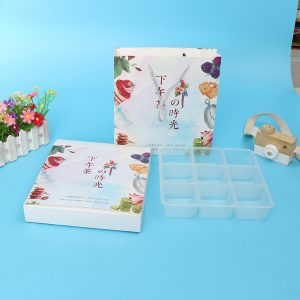Smart packaging plays a crucial role in ensuring food safety by providing real-time monitoring, tracking, and communication capabilities throughout the food supply chain. It leverages various technologies to enhance safety, reduce the risk of contamination, and improve the overall quality of food products. Here are some ways in which smart packaging contributes to food safety:
- Temperature Monitoring: Smart packaging can incorporate temperature sensors to monitor and record the temperature of perishable goods during transportation and storage. This helps ensure that the food remains within the safe temperature range to prevent bacterial growth and spoilage.
- Time-Temperature Indicators (TTIs): TTIs are built into smart packaging to display visual indicators that change color or provide other signals when the food has been exposed to unfavorable temperatures for an extended period. This helps consumers and stakeholders determine if the product is still safe to consume.
- Quality and Freshness Indicators: Smart packaging can include indicators that monitor the freshness and quality of the food. For example, gas sensors can detect spoilage gases, providing an early warning for potential contamination.
- Tamper-Evidence Features: Tamper-evident smart packaging can detect and indicate whether the product has been tampered with, ensuring the integrity and safety of the food.
- Traceability and Product Authentication: Smart packaging can incorporate RFID tags or QR codes that allow consumers and stakeholders to trace the food’s journey from farm to fork. This provides transparency and helps identify the source of any potential contamination.
- Allergen Detection: Sensors in smart packaging can detect allergens in food products, alerting consumers with allergies to potential risks.
- Authentication and Anti-Counterfeiting: Smart packaging can include unique identifiers, such as holograms or QR codes, to verify the authenticity of the product and protect against counterfeiting.
- Smart Labels: Smart labels can provide information about the food product’s nutritional content, expiration date, and proper storage conditions, helping consumers make informed decisions and handle the food safely.
- Communication with Consumers: Smart packaging can interact with consumers’ smartphones or other devices to provide additional information about the product, including cooking instructions, handling guidelines, and recalls, ensuring safe usage.
- Real-Time Data Sharing: Smart packaging enables real-time data sharing between stakeholders along the supply chain, including producers, distributors, retailers, and regulatory authorities. This facilitates quick responses to potential safety issues or recalls.
- Reducing Food Waste: By providing accurate information about the food’s condition and freshness, smart packaging can help consumers use products before they spoil, reducing food waste and potential safety risks.
Overall, smart packaging enhances food safety by providing valuable information, early warnings, and data-sharing capabilities throughout the supply chain. It empowers consumers and stakeholders to make informed decisions, identify potential risks, and take proactive measures to ensure the safety and quality of food products.








